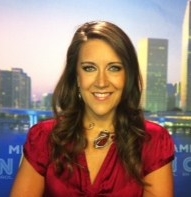 House Steps Up with National STEM Competition
House Steps Up with National STEM Competition
Added Focus Can Help Address Disparities in Math and Science
Former Astronaut Jose Hernandez makes a strong case for expanding opportunities in science, technology, engineering and math (STEM) and computer science fields in a recent op-ed saying “it doesn’t take a rocket scientist to realize we are trailing the rest of the world” in developing STEM talent. Hernandez goes on to praise the provision of the bi-partisan I-Squared Act that establishes a national STEM education fund.
While Congress is still considering I-Squared, it has taken another important step designed to attract more students to STEM fields. Based on their highly successful Congressional Arts Competition, the House recently overwhelmingly approved the Academic Competition Resolution of 2013. The resolution, which passed through the Committee on House Administration, Chaired by Rep. Candice Miller (Ranking Member is Rep. Robert A. Brady), establishes a competition for high school students to develop winning mobile and computer applications. Sponsors include:
Rep. Miller, Candice [MI-10] (Lead)
Rep. Brady, Robert A. [PA-1]
Rep. Conyers, John, Jr. [MI-13]
Rep. Delaney, John K. [MD-6]
Rep. Eshoo, Anna G. [CA-18]
Rep. Gingrey, Phil [GA-11]
Rep. Goodlatte, Bob [VA-6]
Rep. Harper, Gregg [MS-3]
Rep. Honda, Michael M. [CA-17]
Rep. Issa, Darrell E. [CA-49]
Rep. Kuster, Ann M. [NH-2]
Rep. Lofgren, Zoe [CA-19]
Rep. Matsui, Doris O. [CA-6]
Rep. Nugent, Richard B. [FL-11]
Rep. Rokita, Todd [IN-4]
Rep. Royce, Edward R. [CA-39]
Rep. Rush, Bobby L. [IL-1]
Rep. Schock, Aaron [IL-18]
Rep. Wilson, Frederica S. [FL-24]
Efforts like these can make a difference for America’s students, especially among Latino children who are underrepresented in STEM and computer science fields. Latinos, African Americans and American Indians represent 26 percent of the U.S. workforce, but just 11 percent of those graduating with degrees in science or engineering. And Latinos, 16 percent of the U.S. population, represent just 6.2 percent of the engineering workforce and accounted for 8 percent of all certificates and degrees earned in STEM fields.
Clearly, the nation needs a game plan for attracting more students to STEM and computer science fields. A competition in their home congressional districts is an important step and can offer students another outlet for their skill and talent.
The House’s competition is not yet completely defined, but the resolution states that it will evolve over time and challenge students in all the STEM disciplines.
Hernandez recounts being a high school student and hearing news reports about America’s first Latino astronaut, Dr. Franklin Chang-Díaz. Those reports and Dr. Chang-Diaz inspired him to become an astronaut. From role models -today Hernandez is one – to competitions to teachers who motivate, we can reach more students and encourage them to explore STEM fields.
The effort will pay off, not only for the students, but also for the country they will soon help to lead.

[…] By Maria Cardona, Latinovations […]